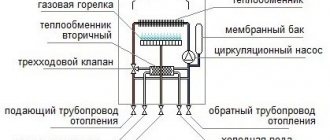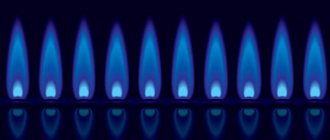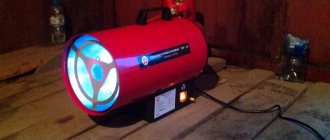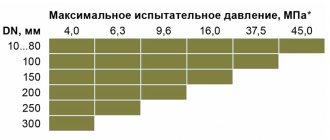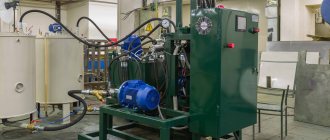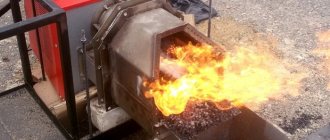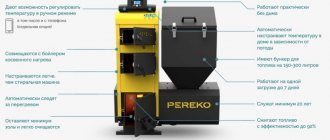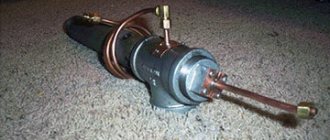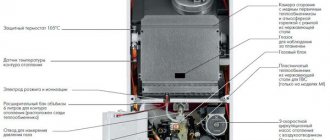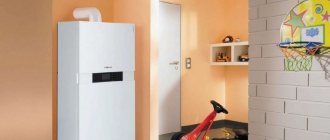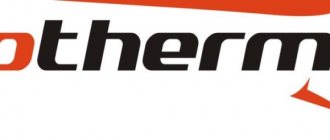The gas burner for the boiler is its most important component. The operation of the boiler, its efficiency and productivity depend on the choice of this component. The demand for such burners is quite high, since the type of fuel they use is considered one of the cheapest today. There is a wide range of gas burners. Therefore, in this matter you need to be careful and take into account all aspects.
What is a gas burner?
Gas burners for boilers are structures within which gas and oxygen are mixed. The mixture flows to the outlet holes and there ignition occurs from a spark or piezoelectric element and a stable, stable torch is formed.
The main task of the listed elements in boilers is to maintain stable and constant combustion of the resulting mixture. As you can see, the design of the boiler with a gas burner is quite simple and its installation will not cause difficulties.
A gas burner consists of several components: a nozzle, an ignition system, an automation system and a flame presence sensor.
Its structure must, first of all, be safe. In addition, this element of the heating boiler must burn the mixture without residue, and the release of harmful substances must be minimal.
Low noise level is another requirement for devices. You definitely need to pay attention to the service life.
Gas burners for heating boilers with automation are another safety requirement. As soon as the fire goes out, the fuel supply automatically stops. This is one of the main criteria for her selection.
They have found their application in household heating colas and in industry. Gas, despite its high consumer qualities, has a fairly low cost compared to other types of fuel. This makes gas burners in demand and popular.
Atmospheric gas burner.
Today, gas AOGV boilers - gas heating water heating devices - are of great interest. A distinctive feature here is the energy dependence of the boilers, that is, they can operate without an electrical network.
In addition, the noted devices are fully automated by the automated control system, which plays the role of an automatic temperature regulator and reduces the amount of fuel consumed.
Burners, torches and burner systems
In all industries, the main amount of heat is obtained by burning fuel in various types of burners.
, being a direct distributor, supplies the Russian and CIS markets with a wide range of burner devices for all major industries and types of applications. Our main specialization is industrial burner devices for various types of furnaces, furnaces, thermal oxidizers, incinerators, drying equipment, large and medium-sized energy technology boilers and boiler plants.
The specialists of the Group, which includes , have many years of experience in calculations, selection of burner devices, connection to equipment and configuration. We are ready to organize the supply of burner devices for various types of boiler and furnace equipment, select burners according to individual projects of our clients, carry out installation and commissioning, and supply spare parts for already supplied burners.
Types of burner devices supplied:
- Burners for heating furnaces
- Burners for dryers, heaters
- Burners for rotary kilns
- Pilot burners
- Flame scanners (detectors)
- Burners for sulfur production furnaces
- Burners for various boilers and boiler equipment
- Burners for waste incineration plants
- Burners for afterburners, incinerators, thermal oxidizers
- Torches and flare burners
- Spare parts and accessories
- Burner control systems, control cabinets
For all offered burner devices, the supply of spare parts and components can be organized, including the development and production of non-standard equipment items at Russian and foreign enterprises of our partners.
All burners and burner devices offered for delivery are manufactured in accordance with international standards, certified for compliance with the requirements of the Technical Regulations of the Customs Union, and supplied with the necessary package of documents - passports, installation and operating instructions, sets of drawings in Russian.
During the period of our work, the Group’s specialists have accumulated extensive experience in the implementation, installation and commissioning of burner devices from various manufacturers. In the process of work, we are ready to provide engineering companies and design institutes with all the necessary information and technical designs for equipment to link it to existing technological systems, to select the most efficient burners, burner systems and torches.
Among the partners of TI-SYSTEMS are leading manufacturers of burners from Europe and Russia. Standard types of burner devices with a power of up to 2 MW are available in a warehouse in Moscow and can be delivered to any region of Russia and the CIS countries.
Files for download:
Questionnaire for afterburner burners Questionnaire for burners with low NOx content Questionnaire for selecting industrial burners Questionnaire for selecting burners for desulfurization plants Questionnaire for selecting burners Questionnaire for ordering an ignition and flame control system for a flare installation.doc Questionnaire for ordering an induction heating installation UINS.doc Questionnaire for ordering a flare tip with an ignition and flame control system.doc Questionnaire for ordering a torch tip.doc Questionnaire for ordering a flare system.docx Questionnaire for ordering a closed-type flare unit.doc Questionnaire for ordering a flare installation for flue gas heat recovery.doc Questionnaire for ordering burners for petrochemical refining and petrochemical furnaces.docx
- Burners, furnaces, combustion chambers and afterburners DUIKER COMBUSTION
- GREENS COMBUSTION burners, afterburners, thermal oxidizers, torches, industrial fans
- Burners KPS METAL
- ZEECO products - burners, torches, afterburners, vapor recovery systems
- John Zink Hamworthy Combustion Burners
- Burners and burner systems Combustion Solutions
- TECFLAM burners and burner systems for furnaces, boilers, drying chambers
- ITAS burners and burner systems
- ECLIPSE burners
- Burners and burner systems ESA-Pyronics
- ECONEX fittings for burner systems
- BALTUR burners
- Burners ECOSTAR COMBUSTION SYSTEM
- ENERGY burners
- Burners MAXON Honeywell
- Burners Riello / Beretta
- SAACKE burners
- Burners and burner systems CIB UNIGAS
- Low pressure biofuel burners AC BURNERS
- Pilot burners, ignition and flame control systems DURAG Group
- PROMA products - burners, sensors, automation
- Flare systems, torches, burners FLARE INDUSTRIES
- Burners, torches, flare tips and burner systems made in Russia
Classification of gas burners
The main types of gas burners: atmospheric/injection, blast/ventilation, and diffusion-kinetic. The first is characterized by an open combustion chamber. Air is supplied by being sucked into the gas flow.
Atmospheric gas burners consist of a tube or several tubes into which fuel is supplied. Low pressure is formed in the tube, due to which air is sucked from the room. Such burners are usually part of the boiler.
Most often, atmospheric gas burners are used for domestic heating boilers. The area that they can heat is no more than 100 sq.m. In addition, heaters can be used in boilers of various types - from expensive to cheap designs.
Ventilation burners have a closed combustion chamber. Here the air is supplied by a fan. Thus, it becomes possible to set the flow power of the gas-air mixture. This in turn leads to high efficiency values.
Blower burners must be purchased separately from the boiler, as an additional unit.
These burners for heating boilers have their advantages. Firstly, it is safety, since they have a closed combustion chamber. The second advantage is the high level of efficiency. Forced-air gas burners for boilers are insensitive to pressure changes.
They also have their drawbacks: high noise levels compared to atmospheric ones, high energy costs, and the high cost of the device itself.
As for diffusion-kinetic gas burners, they occupy an intermediate place between atmospheric and blast ones. Air is not completely supplied to the chamber, but is then added to the flame. They are not used in domestic boilers.
This type of burner has its pros and cons. The main advantage is considered to be achieving the maximum efficiency value. The disadvantage here is the high cost.
Operating rules and cost
A gas burner can accumulate quite a lot of soot during its operation. To prevent this substance from causing damage, and to ensure that the burner itself functions as long as possible, it will have to be regularly cleaned of soot. It is also worth noting that if there is a large amount of soot, it can ignite - this will lead to a fire.
To prevent this from happening, regularly scheduled inspections of the gas boiler and all its other elements are carried out.
You can carry out cleaning yourself, but you should carefully read all the included instructions before doing so. It is best to contact a specialist who already has a sufficient amount of experience in this work - in this case, the work will be completed much faster and better, and the room will not become clogged at all.
The simplest atmospheric gas burner, which, in principle, can be assembled with your own hands, will not cost too much. It will cost about 1.5-2 thousand rubles. If the boiler contains a certain number of sections, then you need to select a burner of a more serious design.
In particular, for a 3- or 6-section boiler, the burner will cost about 8-10 thousand rubles. It is best to purchase domestically produced models, since they are designed specifically for our fuel.
Other differences
In addition to the above, depending on the type of adjustment, there are other types of gas burners. These include single-stage, two-stage, smooth two-stage, modulated.
The structure of a gas burner.
The operating principle of single-stage gas burners is to automatically close the gas valve as soon as the coolant reaches a certain temperature. Thus, the gas burner automatically goes out.
After the gas reaches the temperature of the lower limit, the gas valve automatically opens, which leads to the complete ignition of the burner. Such devices are very convenient to use in gas household appliances.
Two-stage gas burners for the boiler operate in two systems - 40% and 100%. The burner starts working at 40% immediately as soon as the coolant heats up to the desired temperature and the gas valve is closed. The automatic system allows you to switch from one work system to another.
Smoothly adjustable two-stage gas burners operate in two modes. Here the transition to another mode is carried out more smoothly than in two-stage ones.
When heating the boiler continuously, modulating burners are used. Unlike a boiler with an atmospheric burner, this type of burner covers a wide power range. In addition, modulating options significantly save gas.
In turn, modulated options are classified depending on the operating principle of the modulating units.
There are burners with modulation:
- mechanical;
- pneumatic;
- electronic
Burners with electronic modulation provide high precision control. Today, modulating gas burners made in Italy are considered the best.
Features of forced-air burners
pros
- Stable operation of the boiler under any conditions.
- Efficiency is not lower than 95%.
- Operational safety (determined by design solutions).
- Almost complete combustion of fuel (with proper burner settings). This ensures optimization of heating costs and “ecological cleanliness” of emissions into the atmosphere.
- Versatility in fuel. A number of models of pressurized burners (combined version) are converted from natural gas to liquefied or liquid fuel. The purchase of such a boiler makes it possible to solve the problem of fuel backup without replacing the product or using another source of thermal energy.
- Wide power range. This allows the automation of the heating installation to select the optimal mode of its operation. In some models, the burner performance varies from 10 to 100% (modulated options).
- Interchangeability. If an atmospheric burner is purchased from the same manufacturer as the boiler, then in the case of a forced-air burner, you can use products of other brands (with rare exceptions). That is, the owner has a certain freedom of choice.
- High degree of automation of heating equipment.
- Possibility of use in installations of different types: convection, condensation, turbocharged.
Gas burners for universal boilers
Why do we need universal boilers? In fact, fuel for solid fuel boilers, such as firewood and compressed straw, is quite low in price. If the price of one type of fuel rises, you can easily switch to another.
The design and operating principle of a gas burner for universal boilers is more complex. Burners for solid fuel boilers transfer fuel from one type to another. The efficiency of a gas boiler depends on the choice of burner.
Types of burner devices
In terms of their design and purpose, gas burners for propane boilers are similar to conventional gas burners. They are responsible for safely mixing gas and oxygen and then igniting the fuel to operate the boiler. There are different types: single-stage, two-stage and smoothly modeled. Single-stage ones allow you to use the boiler at only one power, but other types of burners provide the ability to configure the operation of the boiler in several power ranges, as well as automatically regulate combustion processes, adjust the required temperature level, and increase the efficiency of the equipment.
Types of universal boilers using a gas burner
Let's look at the example of a universal wood-coal-gas boiler. Such boilers use an atmospheric gas burner, where gas and air are mixed naturally. You can also use a blower system equipped with a fan.
Which one to choose is up to the buyer, but it should be mentioned: fan models are volatile and noisier.
An automated gas burner is performed using a fan circuit. Gas and air are mixed in it, after which the resulting mixture enters the nozzle and ignition occurs.
Design features of the burner for a gas boiler.
A fan, gearbox and automation system are built into the burner side, with the help of which the gas burner is adjusted.
Today, the most famous are universal gas/diesel boilers, since the structure of these substances during combustion is very similar. This makes switching to another fuel quick and easy.
There are also more expensive models of universal boilers that operate on many fuel options. For example, boilers: wood-coal-electricity-gas-liquid fuel. There is only one type of fuel here. It is on this basis that the boiler power is calculated. Accordingly, other types of fuel are secondary.
Using a liquid fuel element will reduce the efficiency of the heating equipment. When heating firewood, diesel, briquettes, the heat rises from the bottom up and heats the coolant. If a burner is used, it spreads horizontally.
As a result, the rear wall of the boiler is exposed to the greatest heat. After long use it may burn out.
Additional thermal insulation will help solve this problem. Diesel fuel must be stored in appropriate places. These include plastic containers and rooms with a protective tray. Sometimes it is buried next to the boiler room, if the soil allows. The issue of storage should be thought out in advance.
Universal boilers are often used in car repair shops. If the object is located in a place without access to a gas main, then universal heating devices will be an excellent choice.
At the same time, consumption can vary significantly depending on power. A sufficient supply of this material is required, which is only possible with large-scale turnover.
Switching from heating one type of fuel to another is sometimes simple, and sometimes labor-intensive. Changing from diesel to gas can be particularly dangerous. The first, as a result of prolonged operation of the heating system, leaves soot in the chimney.
After switching to gas, it may crumble and block the chimney. Then carbon monoxide can enter the room, which is fraught with serious consequences.
Of course, in this case the burner should turn off automatically. Nevertheless, it is not worth risking your life and it is better to turn to specialists. They will definitely clean the chimney after changing the heating operating mode.
All the above transition conditions are characteristic only of single-fuel systems. Their design involves burning fuel in one chamber. On the one hand, such a device is the most economical. If you do not plan to change modes frequently, then there is no point in overpaying.
Based on the materials used, boilers are divided into cast iron and metal. The first option is the most reliable. Their design allows them to withstand severe thermal loads. They are able to provide a long service life even at high operating powers.
The disadvantage of the devices is their bulkiness and weight. When choosing, it is necessary to think in advance about all possible options for operating the specified heating device.
Double-furnace boilers are more practical and easier to use. Especially when it comes to frequent switching from one type of fuel to another. At the same time, they have significant dimensions. The fireboxes in them can be located in different ways: next to each other, one above the other.
In this case, the same coolant circuit is heated by different types of fuel, and the transition is carried out without additional installation work, manually or automatically, depending on the additional equipment used.
Installation of a gas boiler with a burner.
Each compartment is made specifically for a specific type of fuel. The result is high efficiency and cost-effectiveness due to changing operating modes. Switching from one work option to another does not cause any difficulties. In some models it can be done automatically.
These heating systems are especially effective in conditions of power outages, unstable gas supply, and the high cost of connecting to the main line.
Given the availability of solid fuel materials and their relatively low cost, they have no equal. On the other hand, the price of a universal system is quite high.
Low and medium pressure injection gas burners
Based on the principle of organizing the mixing of gas with air, a low-pressure injection gas burner belongs to gas burners with partial pre-mixing.
The gas stream in the burner under pressure comes out of the nozzle (1) at high speed and, due to its energy, captures air in the confuser (2), drawing it inside the burner. Mixing of gas with air occurs in a mixer consisting of a confuser (2), a neck (3) and a diffuser (4). The vacuum created by the injector increases with increasing gas pressure in the burner, and at the same time the amount of sucked in primary air (from 30 to 70%) required for complete combustion of the gas changes. The amount of air entering the gas burner can be changed using the primary air regulator (6), which is a washer rotating on a thread. When the regulator is rotated, the distance between the washer and the confuser changes, and thus the air supply is regulated.
Low pressure injection gas burner: 1 - nozzle; 2 - confuser; 3 - neck; 4 — diffuser; 5 — fire nozzle; 6 — primary air regulator.
To ensure complete combustion of fuel in a gas burner, part of the air is supplied due to vacuum in the firebox. The secondary air flow rate is regulated by changing the vacuum in the furnace.
Low pressure injection burners are made with fire nozzles (5) of different shapes.
Injection gas burners have the property of self-regulation, i.e. the ability to ensure a constant ratio between the amount of gas entering the burner and the amount of primary air sucked in by them. Moreover, if the air supply to the burner using a washer is adjusted according to the color of the flame or the gas analyzer reading for complete combustion of gas and the gas burner operates quietly without noise, then further changes in its load can be carried out by increasing or decreasing only the gas flow rate, without changing the position of the air washer .
When changing the operating mode of a gas burner, it is necessary to monitor the stability of its flame, since the nature of gas combustion is affected not only by the amount of primary air supplied to it, but also by the amount of secondary air entering the firebox.
The medium-pressure injection burner IGK designed by F.F. Kazantsev is a burner with complete pre-mixing and operates stably at a gas pressure of 2... 60 kPa (200... 6,000 mm water column).
The gas entering the gas burner through the gas nozzle (4) injects air in the amount required for combustion. In the mixer (2), consisting of a confuser, a neck and a diffuser, the gas and air are completely mixed.
Medium pressure IGK injection burner designed by F. F. Kazantsev: 1 - plate combustion stabilizer; 2 - mixer; 3 — air supply regulator; 4 - gas nozzle; 5 - staring contest.
At the end of the diffuser, a plate stabilizer (1) is installed in the gas burner, which ensures stable operation of the burners without flame separation or flashover in a wide range of loads. The combustion stabilizer consists of thin steel plates located at a distance of approximately 1.5 mm from one another. The stabilizer plates are pulled together by steel rods, which, in the path of the gas-air mixture, create a zone of reverse currents of hot combustion products, due to the heat of which the gas-air mixture is continuously ignited. The flame front is kept at a certain distance from the burner mouth.
The air supply is regulated using the regulator (3). Sound-absorbing material is reinforced with glue on its inner surface. The regulator has an inspection window (5) to monitor the integrity of the stabilizer.
The disadvantages of injection burners include:
- significant dimensions of the burners along the length, especially burners with increased productivity (for example, the IGK-250-00 burner with a nominal productivity of 135 m3/h has a length of 1,914 mm);
- high noise level for medium-pressure injection burners when a gas jet flows out and air is injected;
- dependence of the supply of secondary air on the vacuum in the furnace (for low-pressure injection burners), poor conditions for mixture formation in the furnace, leading to the need to increase the total excess air coefficient to 1.3...1.5 and even higher to ensure complete combustion of the fuel.
* article is for informational purposes only
** PC "Spetsgazprom" does not produce injection burners
The production plant is ready to carry out a comprehensive modernization of your boilers with the installation of highly efficient, economical SF gas burners, as well as the latest boiler control and safety automation.
Preliminary selection of SF gas burners for a range of boilers
Catalog of gas burners SF (technical characteristics)
Contact us and we will offer you specific modernization options with cost, timing and economic effect:
- Call by phone
- Write by email -
Homemade units
There are craftsmen who remake heating systems with their own hands. On the Internet you can even find the necessary diagrams for changing the devices of gas burners, their installation and adjustment.
Typically, metal is used as a material for the manufacture of heating systems. A cast iron firebox would be much more reliable. However, it is not possible to use it at home.
An excellent option for manual work is to order the system from specialists. They will be able to manufacture the device in accordance with all the customer’s wishes. However, the possibility of defects in the boilers cannot be ruled out, which may appear after some time.
Why do you need homemade heating units? The fact is that the marked options have a lower cost. They are made mainly because of the desire to save money. At the same time, these options are inferior to their factory counterparts in efficiency.
Over a long period of operation, it may turn out that the homemade option will be even more expensive.
Usually only solid fuel and electric units are manufactured. Making a gas or diesel boiler is extremely dangerous. In addition, their installation in the house is strictly prohibited.
According to the principle of operation, a homemade product is no different from a purchased version. It will burn fuel and heat the coolant filled with water.
The main disadvantage of this unit is the lack of warranty. Factory equipment will work and perform its functions. Even if the buyer stumbles upon a defect, he will be able to exchange the product for another.
It is better to use pellets, firewood, and coal as fuel in self-made units. These materials are less dangerous than gas. It is impossible to make heating devices based on the latter.
Simple solid fuel units are the most popular and widespread homemade devices. They are simple, and their design is in many ways similar to a conventional stove. In addition, they are versatile.
Like a conventional stove, these systems can operate on any solid fuel. The main thing is that it burns.
Main parts of a gas boiler.
The efficiency of homemade equipment is significantly lower than factory equipment. It is influenced by many factors.
Among them:
- thermal insulation;
- combustion completeness;
- the correctness of the conclusions.
The efficiency of the unit directly depends on the combustion temperature. The higher it is, the lower the efficiency. In high-quality systems, the temperature in the firebox is maintained at 120–150°C. Higher values reduce the safety of pipes. This in turn significantly reduces the durability of the unit.
When manufacturing heating boilers with a burner, it is better to protect yourself as much as possible from the possible consequences of its operation. Therefore, you should consider a separate purchase of an automatic gas burner, which will be installed in an atmospheric or blown boiler.
You can also make electric heating units with your own hands. Their design may vary. It all depends on the person’s needs. The simplest option is to install a heating element directly into the heating system. In this case, there is no need to make a boiler.
The pipe with the heater must have a sufficiently large diameter. It should be easily removable for repairs and cleaning.
Systems without a heater deserve special attention. Its role is played by water itself. A current is passed through it, and heating occurs due to the movement of water ions. The liquid itself must contain salt.
One of the dangers of this device is electrical breakdown. Essentially the same as a short circuit. Gas may also accumulate in the system. As a result, heating efficiency will decrease.
From all of the above, the best option is a solid fuel unit. Its body can be assembled from heat-resistant steel. It is characterized by increased strength, less wear and high resistance to thermal influences.
However, heat-resistant steel is expensive and in practice is rarely used in homemade boilers. Another option is cast iron: this material tolerates heat well, although it is difficult to work with. Equipment for the manufacture of cast iron stoves is available only at specialized enterprises.
It is important to understand that without the proper experience and skills, it is better not to make a heating system yourself. Safety must come first. It is enough to make even one inaccuracy, and this can lead to disastrous consequences.
The best tourist gas burners
Review of the best tourist mini-burners ideal for camping conditions.
TOURIST Krab TM-300
One of the most budget options for a hiking trip.
Place the burner legs to the sides; when you need to cook something, when you're done cooking, fold them back and the burner will again become small and fit into almost any corner. There is one burner, a large one.
Average fuel consumption is 125 g/h. The cylinder connection is collet. There is a case with a lock for storing the unit. The low height guarantees the stability of the unit.
Specifications:
- power: 1.75 kW;
- height: 8.6 cm;
- width: 11.3 cm;
- depth: 10.7 cm;
- weight: 330 g.
Advantages
- piezo ignition installed;
- little gas consumption;
- light weight;
- serves, judging by customer reviews, for many years;
- there is flame protection from the wind.
Flaws
- the adjustment knob gets hot from the fire;
- The plastic storage case is missing.
TOURIST TULPAN-S TM-400
Mini cooking stove: a convenient accessory for the avid traveler.
The petal mechanism protects the flame very well from gusts of wind and reflects heat. The petals themselves can be adjusted if necessary. The device can be stored in a case made of thick waterproof material with a zipper. Fuel consumption per hour is 125 g.
The cylinder connection is collet. The chrome plating resists corrosion and reduces wear on the housing. Production - South Korea.
Specifications:
- height: 12.2 cm
- width: 14.2 cm
- depth: 13.8 cm
- weight: 510 g.
Advantages
- piezo ignition;
- inexpensive model;
- light;
- compact;
- cheap.
Flaws
- if water gets into the piezo ignition, it stops working;
- wind protection does not work perfectly;
- not often found in stores.
TOURIST MINI-1000 TM-100
TOURIST MINI-1000 TM-100: you won’t regret the money spent.
Good build quality, small dimensions, low fuel consumption - this model with a collet connection will be able to quickly feed a whole company. The hard case allows you to easily carry the burner in a backpack and transport it over long distances.
The power is enough to bring half a liter of water to a boil in a few minutes. Fuel cylinders are inexpensive and sold everywhere. Stable on uneven surfaces.
Specifications:
- thermal power 1.5 kW;
- gas consumption: 150 g/h;
- height: 10 cm;
- width: 16 cm;
- depth: 16 cm;
- weight: 450 g.
Advantages
- reliable;
- comfortable;
- weighs little;
- affordable;
- stylish design.
Flaws
- piezo ignition is “afraid” of water;
- tight handle;
- Some users complain of cracks appearing on the hob.
TOURIST TULPAN-L TM-450
A popular model among tourists.
Another burner in the shape of a flower. Durable (withstands a 3-liter saucepan), easily folds and fits in a thick case (it is sold complete with the burner).
There are 3 “legs”, the tips have an anti-slip coating. There is a gas supply regulator and piezo ignition. Fuel consumption - 125 g in 60 minutes. Convenient wind protection prevents the fire from going out.
Specifications:
- height: 14.2 cm;
- width: 16.5 cm;
- depth: 17.3 cm;
- weight: 665 g;
- power: 1.75 kW.
Advantages
- light weight;
- inexpensive;
- comfortable;
- durable coating;
- operation does not require skill;
- there is piezo ignition.
Flaws
- the “petals” quickly burn and change color;
- narrow cover - the unit passes inside with difficulty;
- The connector for connecting the gas cylinder often becomes loose.
Bottom line
Gas burners have found their application in household heating systems, as well as in industry. Gas, despite its high consumer qualities, has a fairly low cost compared to other types of fuel. This makes gas burners in demand and popular.
This review discusses the main types of gas burners, their advantages and disadvantages. This information will definitely be useful when choosing a boiler for heating, taking into account the place of its use: house, apartment, cottage.
